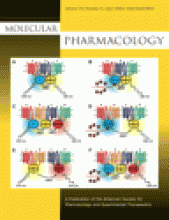Abstract
Most cellular functions, including signaling by G protein-coupled receptors (GPCRs), are mediated by protein-protein interactions, making the identification and localization of protein complexes key to the understanding of cellular processes. In complement to traditional biochemical techniques, noninvasive resonance energy transfer (RET) and protein-fragment complementation assays (PCAs) now allow protein interactions to be detected in the context of living cells. In this review, fluorescent and bioluminescent PCAs are discussed and their application illustrated with studies on GPCR signaling. Newly developed techniques combining PCA and RET assays for the detection of ternary and quaternary protein complexes are also presented.
Footnotes
-
This work was supported by the National Institutes of Health National Institute of Mental Health [Grant MH060397] and by Purdue University.
-
ABBREVIATIONS: FRET, fluorescence (Förster) resonance energy transfer; BRET, bioluminescence resonance energy transfer; BiFC, bimolecular fluorescence complementation; GPCR, G protein-coupled receptor; PCA, protein complementation assay; RET, resonance energy transfer; BiLC, bimolecular luminescence complementation; FP, fluorescent protein; YFP, yellow fluorescent protein; CFP, cyan fluorescent protein; VN, Venus N-terminal fragment; VC, Venus C-terminal fragment; CN, Cerulean N-terminal fragment; CC, Cerulean C-terminal fragment; AR, adrenoceptor; IP, Immunoprecipitation; CRLR, calcitonin receptor-like receptor; ER, endoplasmic reticulum; RAMP, receptor activity-modifying protein; ACII, type II adenylyl cyclase.
- Received December 6, 2008.
- Accepted January 13, 2009.
- The American Society for Pharmacology and Experimental Therapeutics
MolPharm articles become freely available 12 months after publication, and remain freely available for 5 years.Non-open access articles that fall outside this five year window are available only to institutional subscribers and current ASPET members, or through the article purchase feature at the bottom of the page.
|






